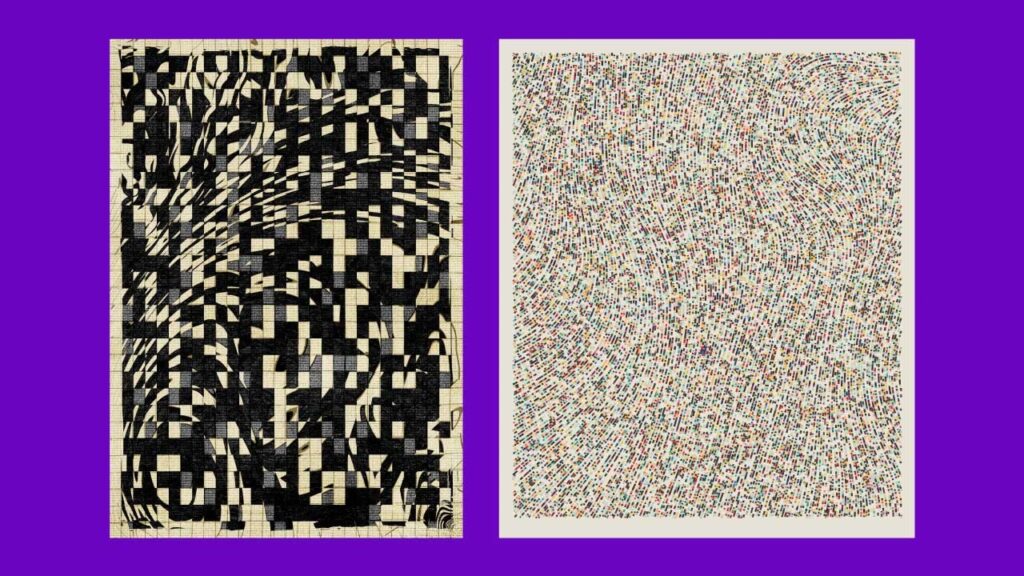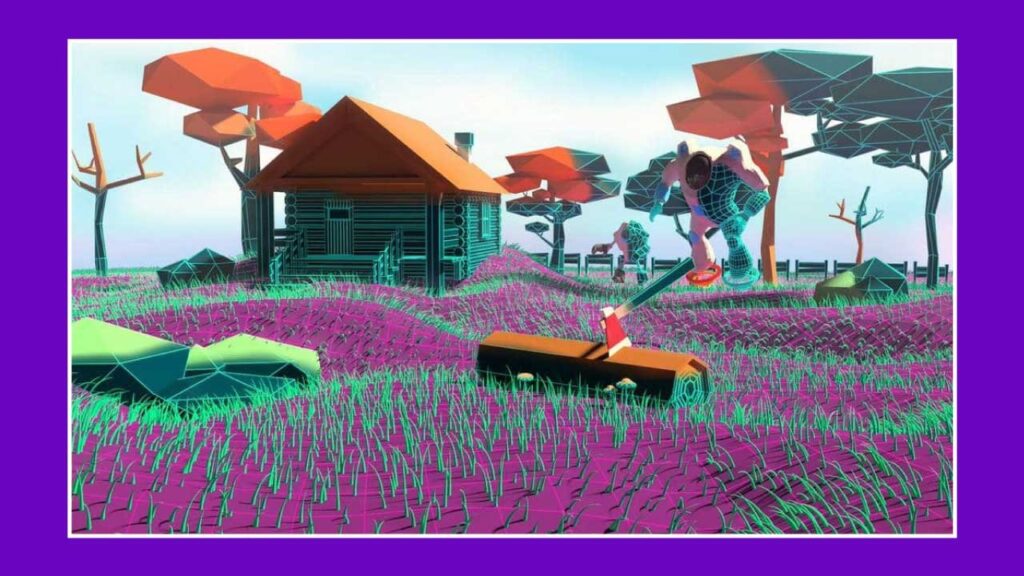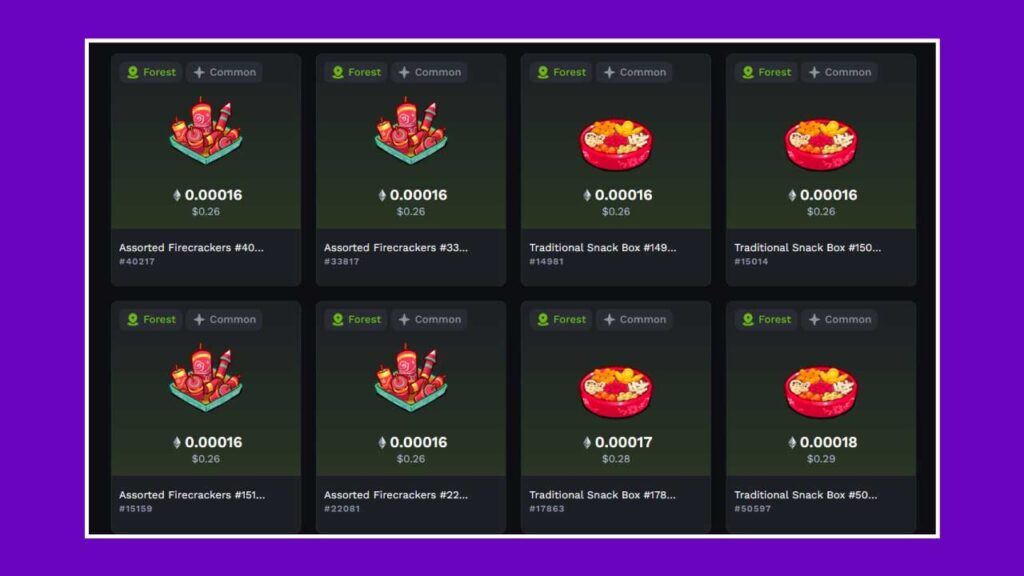NFTs aren’t just pictures of monkeys. They are beyond what you most commonly see on crypto twitter or in news, which are PFP NFTs.
The whole concept of NFT is to provide digital ownership in ways that wasn’t possible in the pre-blockchain era. And today there are more than 10 types of NFTs each with different utilities.
And that’s what this article is all about.
Art NFTs are a new way for artists to sell their digital artworks on the internet. In the past, an artist’s work used to be duplicated easily, and there is no certain mechanism of earning from the art resales.
NFTs help with these concerns. Instead of just sharing art on social media, artists can put their digital creations up for sale on platforms like OpenSea.
Buyers can make offers or pay a set price.
Plus, there are more perks! Artists can keep getting paid when their art is sold again and again. It’s like a never-ending bonus for them, all thanks to NFT Royalties.
Artblocks is a good example of this. It is an NFT project that generates original digital artwork pieces on the Ethereum blockchain via an algorithm (generative art).

And this is how the listing and sell the NFT art works:

If you have even seen someone on social media using a picture of a dumb cartoon animal as their profile pic then most probably it’s a PFP NFT aka Profile Picture NFT.
Bored Apes and Crypto Punks (it’s the first ever 10k NFT collection) are very well known NFT projects in this category, with many NFTs sold even for millions of dollars.

Now the value of these PFP projects depends on various factors. Some just buy for status (by paying $100k just like how people buy luxury items), some just buy to define their online identity, some just buy for the utility it provides (meetups, experiences, etc.), and many just buy to trade them on the blockchain (similar to greater fool theory).
I own this NFT from an NFT project called Dronies (Solana blockchain), and I use it as a PFP for my Twitter and it’s also this blog’s logo (in case you haven’t noticed).

BTW, if you are wondering how these PFP NFT collections are created, here is a beginners guide on that.
Physical products like shoes, jewellery can be attached to NFTs.
Unlike a PFP NFT, where you own the JPEG, in the case of Phygital NFTs you’ll be owning the product that is attached to the NFT (along with the NFT). This is also called digital twin model, because you get both the Digital (NFT) and Physical (product) versions.
This model is getting good taction in the fashion industry.
Fashion brands like Adidas and H&M are using NFTs to make fashion even more exciting. They’re creating virtual clothes and items that you can wear in online worlds, aka metaverse.
Some brands even let you turn those digital designs into real, physical items you can own. Nike has done that with RTFKT.
By purchasing one of these NFTs, you can wear their sneakers in the metaverse as digital items or collectibles while claiming the right to own the physical sneaker in the real world.

Membership NFTs are digital keys stored on a blockchain that revolutionize the way we access memberships and subscriptions.
Instead of juggling multiple passwords, a single seed phrase grants access to various memberships. These NFTs provide secure ownership and easy verification, tied to a wallet address, enhancing privacy and data protection.
Users can also sell their membership NFTs for profit. The blockchain ensures transparency and authenticity by tracking ownership and movement, creating a verifiable record of membership access.
As long as you hold the NFT, you have ongoing access to your chosen community or service, simplifying and improving the membership experience.
ETHJETS (Jet Me) is a good example of this. They’ve launched their membership NFTs that gives you access to charter their jet with major discounts.

Big brands like Coca-Cola, Gucci, Adidas, Nike, Budweiser have launched their NFT collections. Each of these NFTs has different utilities.
While some just act as a collectable and are airdropped to their loyal audience, some NFTs act as loyalty memberships, and some NFTs come with Phygital experiences.
Brands are utilizing NFTs in various ways, from promoting limited-edition products to raising funds for social causes or even narrating their brand stories in the metaverse.
McDonald’s, for instance, issued MCNFTs (the restaurant chain issued a limited number of MCNFTs to create that hype and garner eyeballs) to generate excitement around the return of a beloved menu item, while Anheuser-Busch offered exclusive access to events for NFT holders.
Ethereum Naming Service aka ENS is a very good example of this. You can buy a .eth name and attach it to a wallet address. For example, my ENS name, sujith.eth is linked to my wallet address “0x…whatever”.
And here, the .eth name is an NFT, and you can own a .eth unique item, just like you own a unique art NFT.

Unstoppable Domains is another example that belongs this NFT utility category.
Yes, you can now own your favourite tracks from favourite artists.
Music NFTs are transforming the music industry by giving artists full ownership of their work, offering revenue-sharing features, and creating token-gated communities for fans.
These NFTs allow artists to break free from the meagre earnings of streaming platforms, potentially earning more from a smaller group of dedicated supporters. How? Fans, in turn, become early investors, fostering a closer relationship with artists.
This decentralized approach opens up new markets and business models for musicians, while also complementing existing streaming platforms.
For example, Justin Bieber’s hit track ‘Company’ became an NFT for royalty sharing. It has been turned into multiple NFT by another block, from which fans could earn royalties from future streams of the track.
Virtual Land NFTs are like digital pieces of land in a make-believe world called the metaverse. They’re bought and sold using special tokens.
These NFTs are popular because they give you real ownership and control of your digital land. Blockchain technology makes sure that ownership is clear and can be easily proven. It’s a bit like buying a piece of land in a video game but having real control over it.
One big advantage is that these virtual lands can be used for fun, creativity, and even as a status symbol. If you can build experiences on the piece of land that you own, it’ll be worth more as more and more users will be visiting the place.
Decentraland and Sandbox are very well known in this space. One land piece in Decentraland was sold for $2.4M.

Gaming NFTs are digital assets associated with video games, encompassing in-game items, characters, skins, and more. They offer players true ownership and control over these virtual items through blockchain technology.
This ownership is transparent, transferable, and can persist beyond a game’s lifespan.
Gaming NFTs enable the emergence of play-to-earn and free-to-own games, where players can earn NFTs while playing or co-own the game economy. They also facilitate interoperability, allowing items from one game to be used in others.
Some notable examples include The Sandbox, Axie Infinity, and The Game of War: Fire Age.
Items on Axie Infinity NFT Marketplace:

Celebrity NFTs are a thing now. We have NFTs from Donald Trump, Snoop Dogg, Eminem, Paris Hilton and more.
Celebrity NFTs represent a trend where famous Hollywood figures use NFTs to monetize their fame and creativity. Many celebrities have launched NFT collections featuring exclusive content, artwork, and personalized experiences, engaging with fans and expressing their creativity.
For example, Snoop Dogg launched his own NFT collection called “A Journey with the Dogg” which featured exclusive music and original artwork, allowing fans to own a piece of Snoop Dogg’s creative journey.
Donald Trump has dropped a series of NFTs on the polygon blockchain and they got sold like hot cakes during the drop.
In conclusion, NFTs are not just digital pictures; they represent a diverse range of digital assets that redefine ownership in the digital age.
From art to virtual real estate, membership access to music, and even celebrity NFTs, these unique tokens offer creators and collectors new opportunities for expression, engagement, and monetization.
As the NFT ecosystem continues to evolve, it’s clear that these digital tokens are here to stay, offering exciting possibilities for creators and enthusiasts alike.